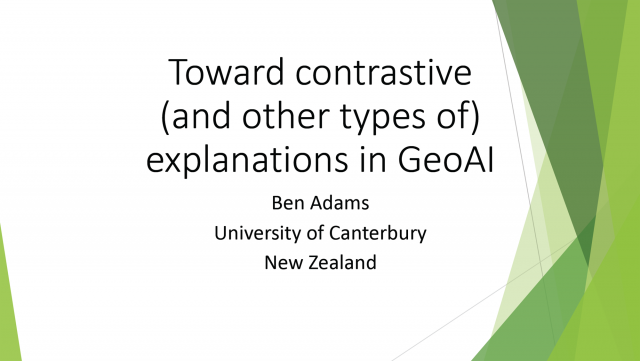Tech Talk: Ben Adams

Contrastive explanations in GeoAI
Ben Adams
University of Canterbury
4:00 p.m. Tuesday, October 20, 2020 | Zoom
Abstract:
In the last few years interest in GeoAI has grown as newer machine learning techniques have shown success when applied to geographic problems. For the most part, this work has focused on training predictive deep learning models using large data sets. However, these models can be opaque and the reasoning behind why certain outcomes are predicted will not be clear to a human who might want to make informed decisions based on the predictions. In this talk my plan is not to discuss my own prior research but rather to introduce some recent research on explainable AI, and then to start a discussion within the GeoAI community about how we can build geographic AI systems that better explain their reasoning. In particular, I will focus on contrastive explanations and show how they might work for the kinds of use cases that have been presented at the Reasoning in GeoAI workshop, including crime analysis, travel behaviour modelling, and population projection.
Bio:
Ben Adams is a Senior Lecturer in the Department of Computer Science and Software Engineering at the University at Canterbury, New Zealand. He holds a PhD from the University of California, Santa Barbara and his research mainly focuses on exploring new ways of using computing technology to advance human understanding of the environment and world. His research includes the development of theories that explain how digital information reflects human conceptualization and building software systems that problem solving. Ben’s research interests include, indicatively, information retrieval, environmental narratives, spatial data science, spatial cognition and environmental narratives.
The Spatial Tech Talks are designed to stimulate discussion and interaction within the university’s spatial technology community, as well as to promote sharing of tools and techniques for mapping and spatial analysis.